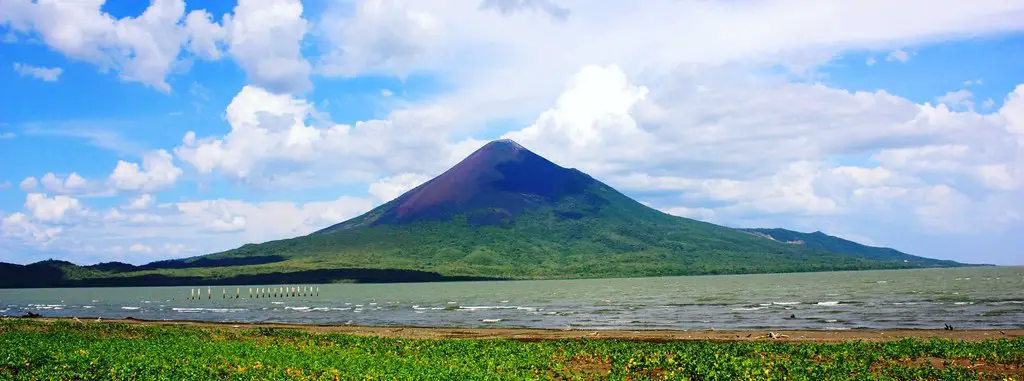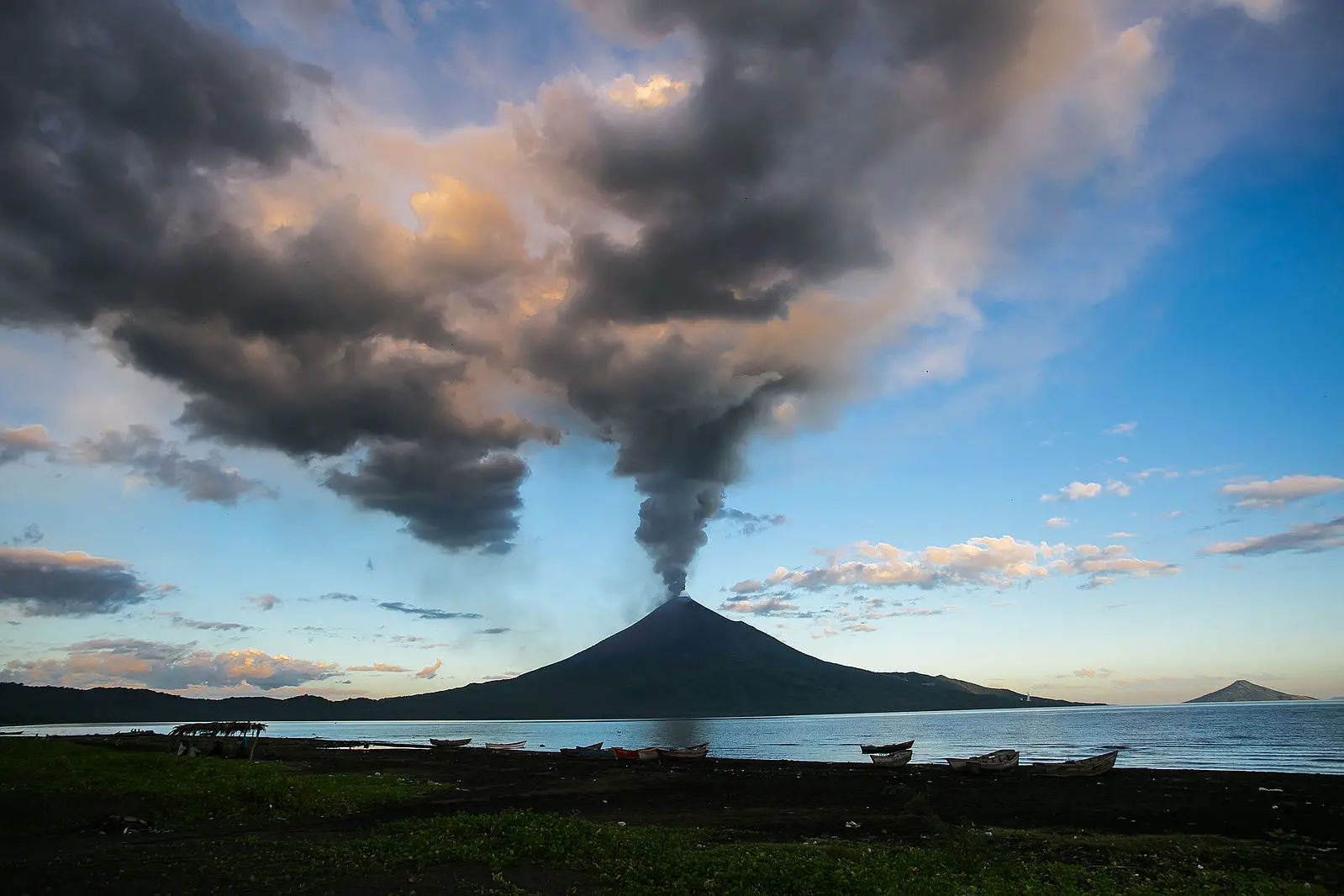For many travelers flying into Nicaragua, the final approach at the Augusto Sandino International Airport in Managua provides a vantage point that lives up to the country’s title of The Land of Lakes and Volcanoes. On the northern side of vast Lake Managua sits the towering 4,127 foot Volcano Momotombo: a cone-shaped stratovolcano that is part of the Maribios volcanic chain that runs from northwest to southeast through Central America. According to a geological survey by San Diego State University, there are only a handful of near-perfect stratovolcanos in the world and they are the most picturesque but also the most deadly.
Based on historical data, the Momotombo Volcano (also known as the Volcán Momotombo) has erupted or vented more than 15 times beginning with its first recorded eruption in 1524 to its most recent serious eruption in 1905. The volcano is most noted in history by its violent eruption in 1609, when it destroyed León Viejo (dangerously located at the base of the volcano), and forced the surviving inhabitants to relocate 19 miles away in the colonial city now known as León.
Today, this young volcano (only 4,500 years old), occasionally vents gas and plumes of smoke. Although it has been relatively quiet for more than 100 years, this quiet giant still threatens Puerto Momotombo and other small villages around its base.
According to records by the Smithsonian Institute’s Global Volcanism Program, the volcano has been showing signs of activity over the past decade with gases being measured at more than 750 degrees Centigrade with seismic activity numbers as high as 500 in one month.
Currently, a geothermal plant (Ormat Momotombo Power Company) managed by Ormat Technologies based in Reno, Nevada, is producing electricity from this high amount of heat despite the surrounding danger. As of 2010, it provides more than 10 percent of Nicaragua’s electrical power while offsetting more than 120,000 tons of carbon dioxide annually.
Exploring the Momotombo Volcano, Nicaragua

As one of Nicaragua’s most beautiful and tallest volcanoes, the attraction for many adventure tourists is to explore and make the challenging climb to its summit and active crater. Before any plan is made, the first and most important step is to obtain a permit from the company that runs the geothermal plant. As strange as this sounds, the plant serves as the staging area for the beginning of the hike.
Unlike other manageable climbs of volcanoes such as the Volcán Masaya in the southeast or the Cerro Negro in the northwest, Momotombo is a highly challenging climb. The trails are initially graduated and manageable but eventually become extremely steep with angles of up to 45 degrees, especially around the summit. The summit itself is made of volcanic sand and rocks, making it not only treacherous but exhausting for anyone not in good physical shape.
Many climbers state that it comfortably takes about nine hours or more for a round trip. Normally the climb is achieved in two days by camping on the slopes of the summit but more extreme adventurists can climb it in one day. To make the trek more attractive, some tour companies even offer an overnight at a nearby farm that includes hot springs.
But after all of the danger and extreme risks comes the great reward. The crater provides the climber with spectacular views of steaming fumaroles and lava, while the summit itself offers unforgettable views of the Pacific Ocean, Lake Nicaragua, the cities of León, Managua, Granada, and Matagalpa (more than 60 miles away).
Nicaragua Volcano Tours
With the tourism resurgence in Nicaragua, several tour companies offer volcano treks to Momotombo as well as others throughout the country:
- Tours Nicaragua: based in Managua, it offers a seven-day Volcanic Obsession Tour with guided treks across 21 volcanoes. The Momotombo portion include one night of camping on the slopes and five nights in León to explore the other 20.
- Quetzaltrekkers: based in León, it is a non-profit volunteer organization that provides tourists guided hikes in order to raise money for street children. The one-day Momotombo trek begins early in the morning and finishes with a swim in the Laguna Asososca.
- Julio Tours Nicaragua: based in León, it offers both a one-day (nine-hour) trek or an overnight trek that leaves at sunset.
- Fun “N” Sun Travels: based in León, it offers both a one-day (six-hour) trek that begins with a drive up to 1,475 feet in a four-wheel-drive vehicle with the final push on foot, or the two-day overnight trek with camping on the slopes.
The near-perfect cone of the Momotombo Volcano in Nicaragua has been called the “Destroyer of León Viejo” and has even inspired the country’s favorite son, Rubén Darío, to write a poem about it. With its seismic activity and venting fumaroles, it has also been called Nicaragua’s most beautiful danger. But until its next eruption, it can also be a highly challenging climb and completely worth the effort for anyone reaching its spectacular summit.

It’s not a matter of where, but when. Time is precious and my time spent living and experience the cultures of this world is what I lust for. This is why I created this website, to share true, genuine experiences and not just typical touristy info. Travel, the love of coffee, and food!
